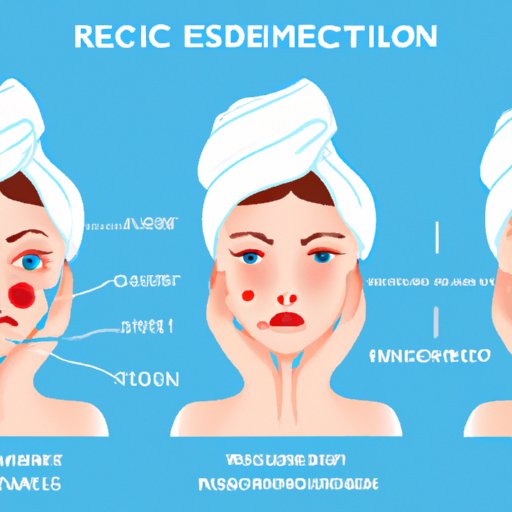
I. Introduction
Facial redness is a common skin concern that can affect people of all ages and skin types. It can be caused by a variety of factors, ranging from environmental triggers to certain medical conditions. Facial redness can be not only unsightly but also uncomfortable and even painful at times. This article aims to provide a comprehensive guide for anyone looking to reduce facial redness, including understanding the causes of it, maintaining a skincare routine, using anti-inflammatory products, applying cooling measures, avoiding known irritants, and seeking professional help when necessary.
II. Understand the Causes of Facial Redness
Facial redness can be caused by a variety of factors, ranging from mild to severe. The most common causes include rosacea, sun exposure, alcohol consumption, and stress. It is essential to identify and avoid these triggers to prevent facial redness from worsening or recurring. Understanding the cause of redness on the face is the first step towards finding an appropriate solution for the problem.
III. Maintaining a Skincare Routine
Developing and maintaining a gentle and consistent skincare routine is extremely important when it comes to tackling facial redness. Using fragrance-free, mild cleansers and moisturizers that are suitable for sensitive skin can help to cleanse, hydrate, and soothe the skin. Always remember to protect your skin from UV rays and use sunscreen with SPF 30 or higher. It is also essential to avoid abrasive scrubs that can damage the skin, particularly if you have sensitive skin.
IV. Using Anti-Inflammatory Products
Anti-inflammatory products are effective in reducing facial redness as they help to soothe and calm irritated skin. Green tea, chamomile, aloe vera, and oatmeal are natural anti-inflammatory agents and are useful in treating redness. Products containing niacinamide and azelaic acid are effective in reducing inflammation and improving skin texture. Always patch test before applying any product to your face and ensure that they are free from irritants and fragrances.
V. Cooling Measures
Applying cool extra-virgin olive oil or ice packs on your face is an effective way to reduce facial redness. The cooling agents help to calm the flushed and inflamed skin. Use a light touch when applying the cooling agent and limit the application duration to 5-10 minutes.
VI. Avoiding Known Irritants
Avoiding known irritants such as spicy foods, hot drinks, and fragranced skincare and makeup products can help to prevent facial redness. Choose non-irritant skincare products that are free from harsh chemicals and fragrances. Opt for mineral-based makeup that is less likely to trigger redness. Another trick is to moisturize with non-irritant, fragrance-free facial oil instead of lotion as it will not clog your pores.
VII. Seeking Professional Help
If the facial redness persists or is severe, it is time to seek professional help from a dermatologist. A dermatologist can help to diagnose the underlying cause & offer a customized treatment plan. Look for a qualified dermatologist who has experience treating facial redness. A dermatologist can prescribe topical or oral medications, such as antibiotics or steroids, to reduce redness and inflammation.
VIII. Conclusion
Facial redness can be a frustrating skin condition, but there are effective ways to reduce and manage it. Establishing a skincare routine that is gentle and consistent is essential for maintaining healthy skin. Use anti-inflammatory products, apply cooling measures, and avoid any known irritants that could trigger redness. If facial redness persists or worsens, seek professional help from a dermatologist. Remember, everyone’s skin is unique, so customize your skincare routine accordingly.





